Gamification in business has been around longer than when the word was first coined back in the early 2000s. As brands strive to differentiate themselves from their competitors and gain market share, some have been leveraging the phenomenon-like strategy of gamification.
From points to tier systems, these gamification components provide a sense of satisfaction to customers, allowing businesses to generate a strong return on investment (ROI).
At first glance, integrating it into your brand seems like a logical choice but it’s not all that simple. Gamification isn’t a set-it-and-leave-it solution that any brand can utilize. While it’s possible for any business to apply it, they should know how to properly adopt it for their business model or products.
Continue reading this piece to understand how big brands use gamification for their business. In this guide, we’ll also go through the benefits of gamification and how to leverage it to help you get inspired.
Partner with the best digital marketing agencies on Visual Objects to ensure your project runs smoothly.
Gamification is Changing the Game
Gamification isn’t just a buzzword in business, it refers to the process of incorporating engaging mechanics or gameplay. Unlike other strategies or business principles, it has a proven impact of producing more potent results when done correctly.
Typically, gamification is applied in the following ways:
- Internally to improve employee engagement and productivity
- Sales and marketing
- Training programs and e-learning
- Crowdsourcing and recruiting
Businesses of all sizes benefit from implementing gamification into different functions. Because of its rising popularity, the global gamification industry is projected to continue growing as more software and data become widely available. Nowadays, business owners can simply use common gamification software like Ifluitive, Badgeville, and Hoople to connect and encourage their target users.
The gamification market’s growth can be attributed to its many benefits. It’s proven to help in boosting revenue opportunities, educating customers and audiences, and many more.
5 Examples of Gamification in Business
There are many businesses that have successfully integrated gamification strategies into their marketing campaigns or sales strategies to generate stellar results. Here are 5 examples of how brands effectively maximized gamification:
Duolingo
Duolingo is a widely-popular language learning platform that was initially launched in 2011 by Luis von Ahn and Severin Hacker. The mobile app is famous for its unique user experience and game-style learning approach that makes it easier, more interactive for students that want to learn different languages.
As one of the most downloaded educational apps, Duolingo is a prime example of a brand that knows how to create memorable and interesting game mechanics.
In the app, users are motivated to continue learning because of gamification elements such as streaks, leaderboards, badges, and level systems. The app lets learners choose how many times a week they want to learn and the app sends notifications reminding them about their streaks, pending quizzes, and rankings.
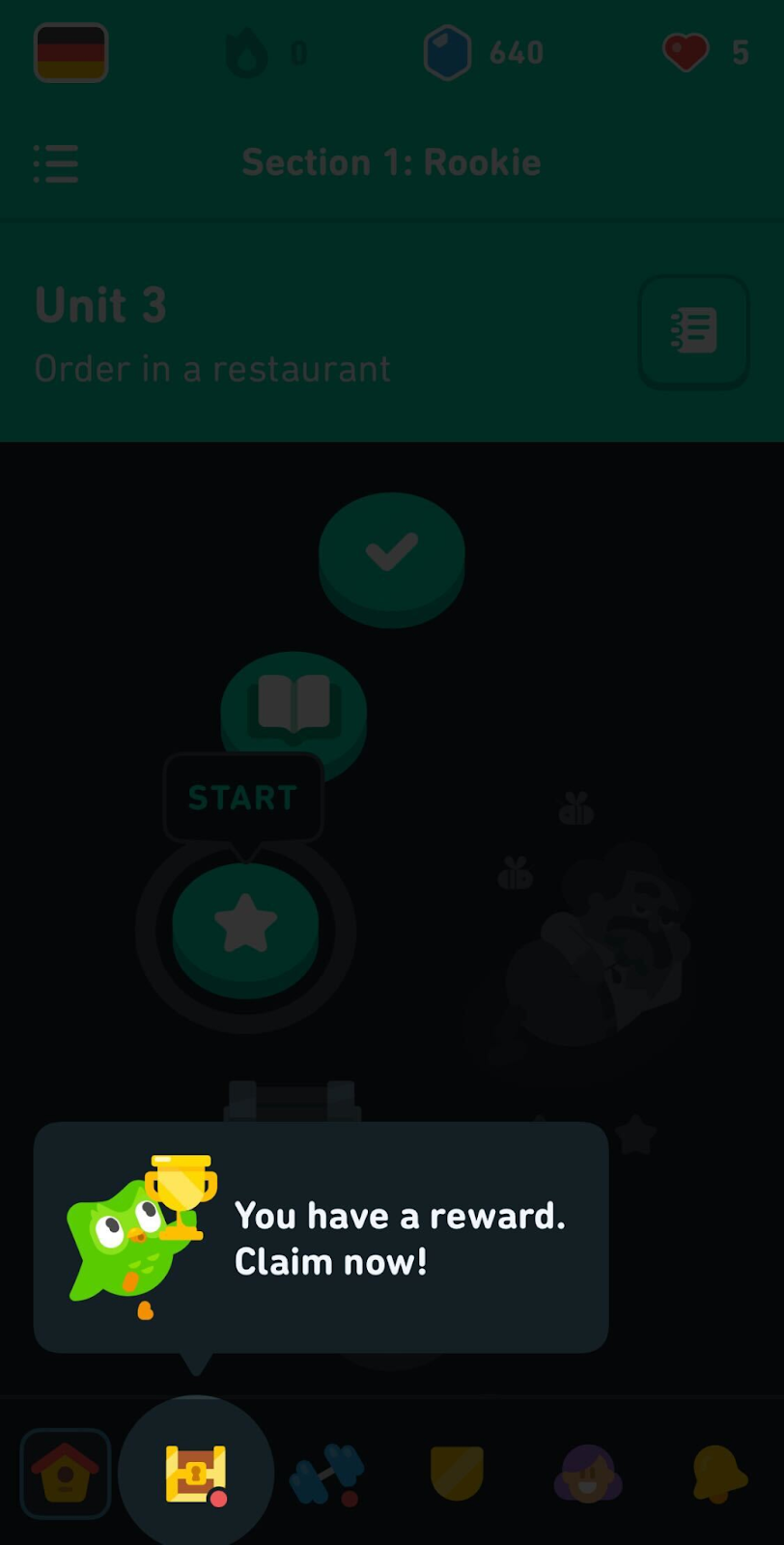
Rewards are among the vital gamification components best optimized by Duolingo. Every time users complete their units or learning goals, the app shows colorful, jolly, and celebratory illustrations that give a sense of accomplishment. Duolingo also knows how to keep encouraging users that don’t ace their lessons by displaying positive and encouraging illustrations.
KFC
With over 24,000 locations around the world, KFC is one of the most popular fast food chains that’s also regarded for its innovation in gamification. The fried chicken chain has launched several variations of its gamified app in countries such as the United Kingdom and Japan.
KFC’s gamified reward system revolves around an arcade theme that gave its loyal customers the chance to earn free KFC menu items. The company saw how the old system of giving points didn’t generate high engagement anymore because of its lack of personal recognition so they’ve put a twist on their approach.
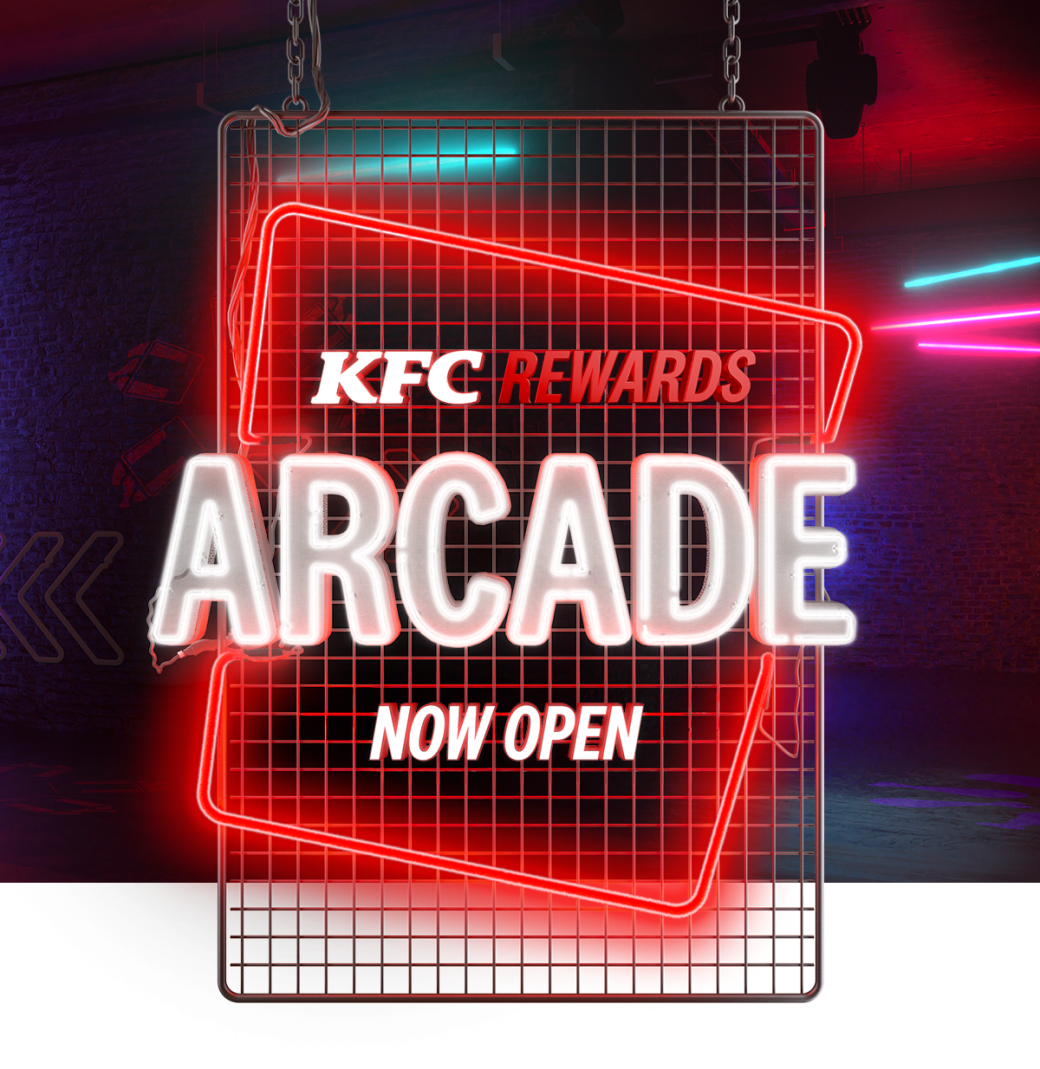
Source: Ads of the World
The KFC Reward Arcade mobile game app is centered around classic game elements, filled with vibrant and unique 3D illustrations. Customers that win KFC menu items in the game can claim the reward in-store, and the prices up for grams include sandwiches, popcorn chicken, and even 6-piece chicken buckets.
Nike
The fitness industry is one of the prime sectors to apply gamification techniques and Nike understands that. The American footwear giant is known for pushing its loyal customers that lack consistent intrinsic motivation to exercise using various means, and the running community is one of its biggest focuses.
The Nike Run Club targeted the average Joe, in particular those who don’t have a daily running partner or personal trainer to push them. The app is praised by many users for its guided running workouts, customizable coaching plans, and gamified mechanics.
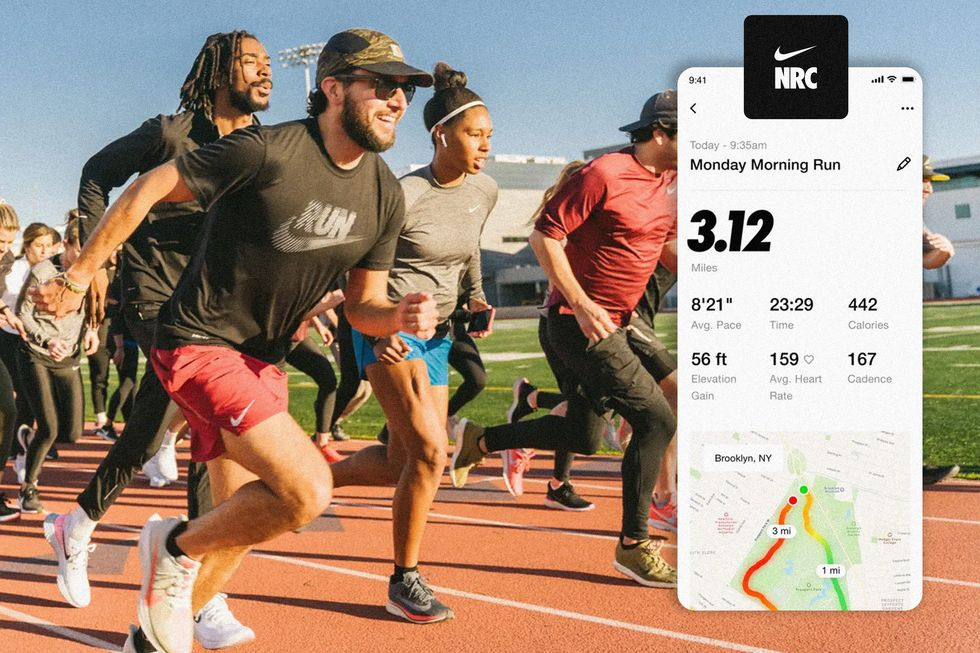
Source: Gear Patrol
Because of the daily challenges, users are encouraged to constantly log in to accomplish their goals. There are limited-time-only challenges that give a sense of urgency, providing an additional push to commit. The users can also share their progress and results with their other running buddies.
While other brands struggle to keep the excitement going months after the release of their apps, Nike nurtures its users by celebrating small wins, consistent progress, and newly unlocked milestones.
M&M
As iconic as their vibrant chocolates, M&M’s approach to gamification was applauded by many marketers and business owners because of its success.
The brand’s Eye Spy pretzel game proved that you don’t need to launch an app to maximize gamification strategies, and it’s a classic example of how to combine gamification and marketing to introduce a new product.
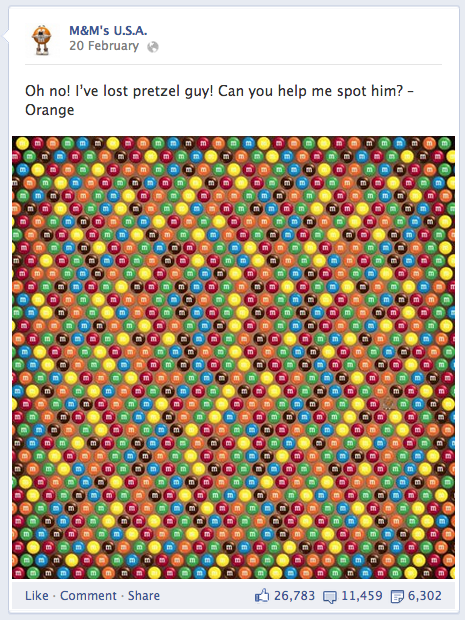
Source: Gametize Academy
With similar mechanics to Candy Crush, the brand posted an image on Facebook back in 2013 that asked its customers to spot a hidden pretzel among a cluster of M&Ms. Considering that it was posted during the early ages of social media, the post garnered solid engagement despite its low budget. There were no grand rewards up for grabs but it still successfully generated public curiosity for the new flavor.
Starbucks
Starbucks, arguably the most popular coffee shop chain in the world, is a leader when it comes to combining different strategies and tactics to engage customers. The coffee giant’s app and My Rewards program are good examples of successful gamification adaption.
Since the launch of its My Rewards program, the company has seen an improvement in customer loyalty and engagement rates. Once customers register on the loyalty program, they receive “stars” for every purchase they make. Those stars are equivalent to points in the brand’s ecosystem and frequent loyal customers move onto the higher levels.
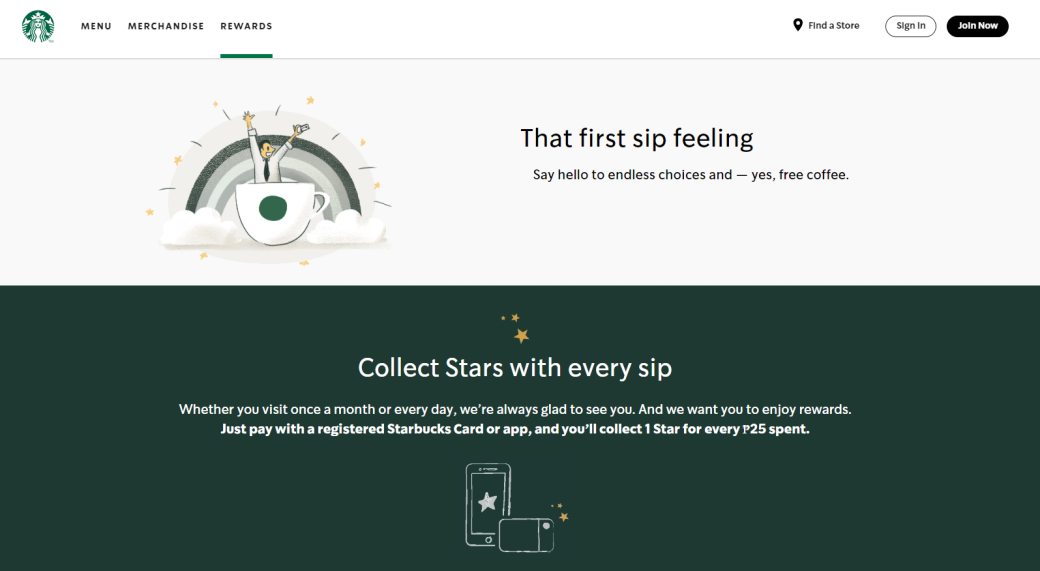
Customers can redeem those stars in exchange for free menu items such as an extra cup of coffee and additional shots of espresso. The higher the level they climb in the program, the better the rewards are for the customers.
Additionally, it released a gamified mechanic that encourages customers to try other items on their menus. This model incentives customers to visit stores more often and purchase more variety of products to earn more stars.
How to Leverage Gamification
The examples in this piece are just to give you an idea of how to create a bespoke gamification strategy for your brand. There’s no one-size-fits-all solution when it comes to applying a gamified approach, but there are ways to productively leverage it for your brand.
Understanding your customers, creating compelling mechanics, and establishing a timeframe are the three crucial keys to an influential gamification application.
There’s no need to rush when it comes to launching a gamification strategy because you need to have a deeper understanding of your target consumers and market first. Just like with any other business process, you can’t proceed to the next steps without having a clear grasp of the likes, lifestyles, and behavior of the audience you’re trying to engage with.
The information you’ve gathered will help you in creating compelling mechanics and establishing a timeframe.
Mechanics are essentially what attracts your customers and encourages them to engage. Meanwhile, timeframes form a sense of urgency that gives them an additional push to participate.
When creating a gamification strategy, consider whether you want to maintain it for the long run like Starbucks or just a one-time campaign like M&M. If you’re planning to apply Starbucks’ approach, you’ll need to keep thinking of new mechanics or come up with new milestones that will keep customers interested.
Keep Up With The Game
Gamification has taken the business world by storm, and experts are still predicting growth in the sector. While most businesses apply it internally to engage with their employees, gamification’s robust benefits to marketing and sales can’t be ignored.
Gamified content is more appealing to the public. That’s why a majority, 93%, of marketers nowadays say they love applying gamification to their campaigns as it’s proven to boost brand awareness, sales, and customer retention.
As the market evolves and consumer behavior changes, keeping up with the gamification game can be the key to boosting your brand. Team up with the best digital marketing agencies on Visual Objects and launch your campaign soon.
Additional Reading: